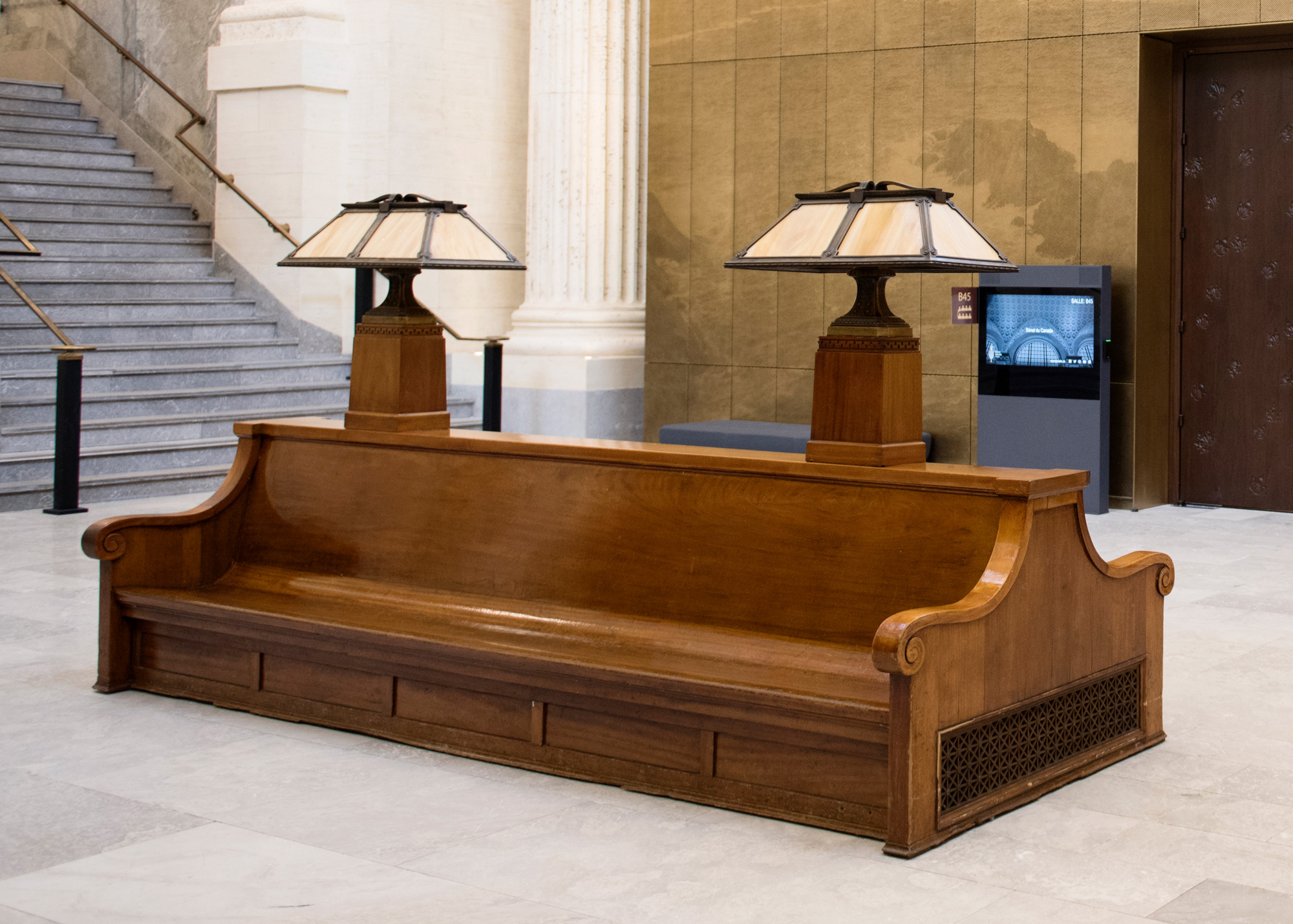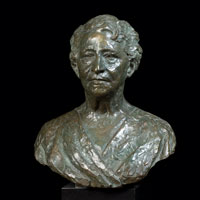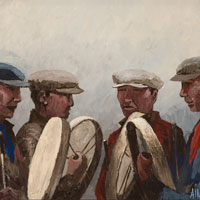Train Station Bench
Rarely the destination itself, a bench is an object associated with waiting. It is understood as a place to rest one’s feet, observe the world around, and pause before the next leg of the journey. So much is pondered upon a bench in its lifetime, thoughts of coming from and moving toward. It fuels a sense of anticipation, which is an active form of waiting that holds the expectation that something will happen. In many cases, it seems that the anticipation of change rather than the change itself is one of the greatest sources of human happiness.
The bench in the Senate of Canada Building is a fairly ordinary two-sided wooden railway station bench. Similar models are found in stations across the world. What makes this one particular is that it was originally crafted for the waiting room of Union Station in Canada’s capital city, which now temporarily houses the Senate of Canada. Clean lines, quality woodwork, bronze detailing, and the Tiffany-style lamps on top of the bench indicate the high quality of design and craftsmanship of the bench. However, the bench has been preserved for its history and symbolism rather than its craftmanship.
The Senate of Canada Building, initially known as Grand Trunk Central Station, is located down the street from Parliament Hill and was Ottawa’s central train station from its opening to the public on June 1, 1912, until it slowly declined in use and was closed in 1966. This simple bench would have been host to many people — tourists, commuters, government officials — all travellers anticipating the arrival or departure of a train, a going from or a coming home. For someone like James Lougheed, the province of Alberta’s first senator, the bench and the train station in which it was situated would have been a liminal space of sorts; an in-between that held the anticipation of a return home, heightened by the most mundane of acts, waiting for a train. Transiting between the business and importance of his role in Ottawa and the small but booming city of Calgary, the station marked the transition between worlds.
What could it mean to a western senator to return home from the seat of power to the seat of actuation? What would those ideas and legislation look like in action? The waiting would not end with the departure of the train. In 1912, when Union Station first opened, it would take a minimum of three days to travel between Ottawa and Calgary. There would be plenty of time to wonder if the decisions made far away, via a lengthy train journey from your home province, would be the right ones for it.
The energy in a train station is a peculiar combination of excitement and boredom. One’s enthusiasm for the journey is tempered by impatience at how long it is taking to get there. Waiting, and patience, is the name of the game. What thoughts, questions, second guesses might have entered the senator’s mind? But to anticipate is to expect, and Mr. Lougheed had great expectations for his much-loved home province of Alberta. In his case, the anticipation of change likely was a key source of happiness and fulfilment.
Caroline Loewen is the Curator of Lougheed House in Calgary, Alberta.

Object details
Title
Train Station Bench
Date
c. 1912
Medium
Wood, metal and glass
Dimensions
H: 185 cm
W: 358 cm
D: 150 cm
Credit
Senate's Artwork and Heritage Collection
Image copyright
Senate of Canada



 The Honourable Marianna Beauchamp Jodoin
The Honourable Marianna Beauchamp Jodoin Indian Drums
Indian Drums